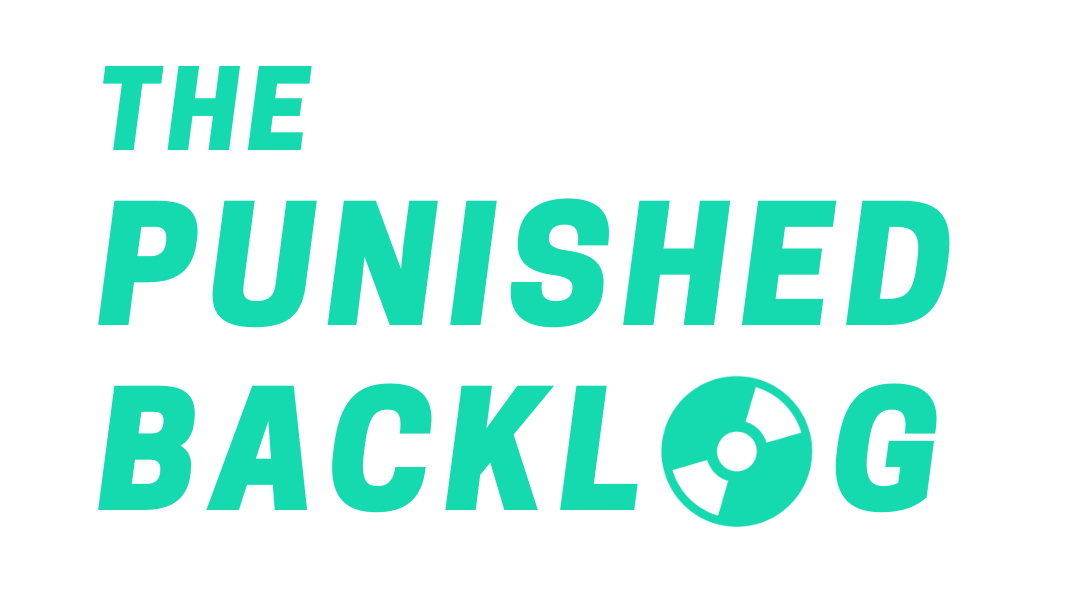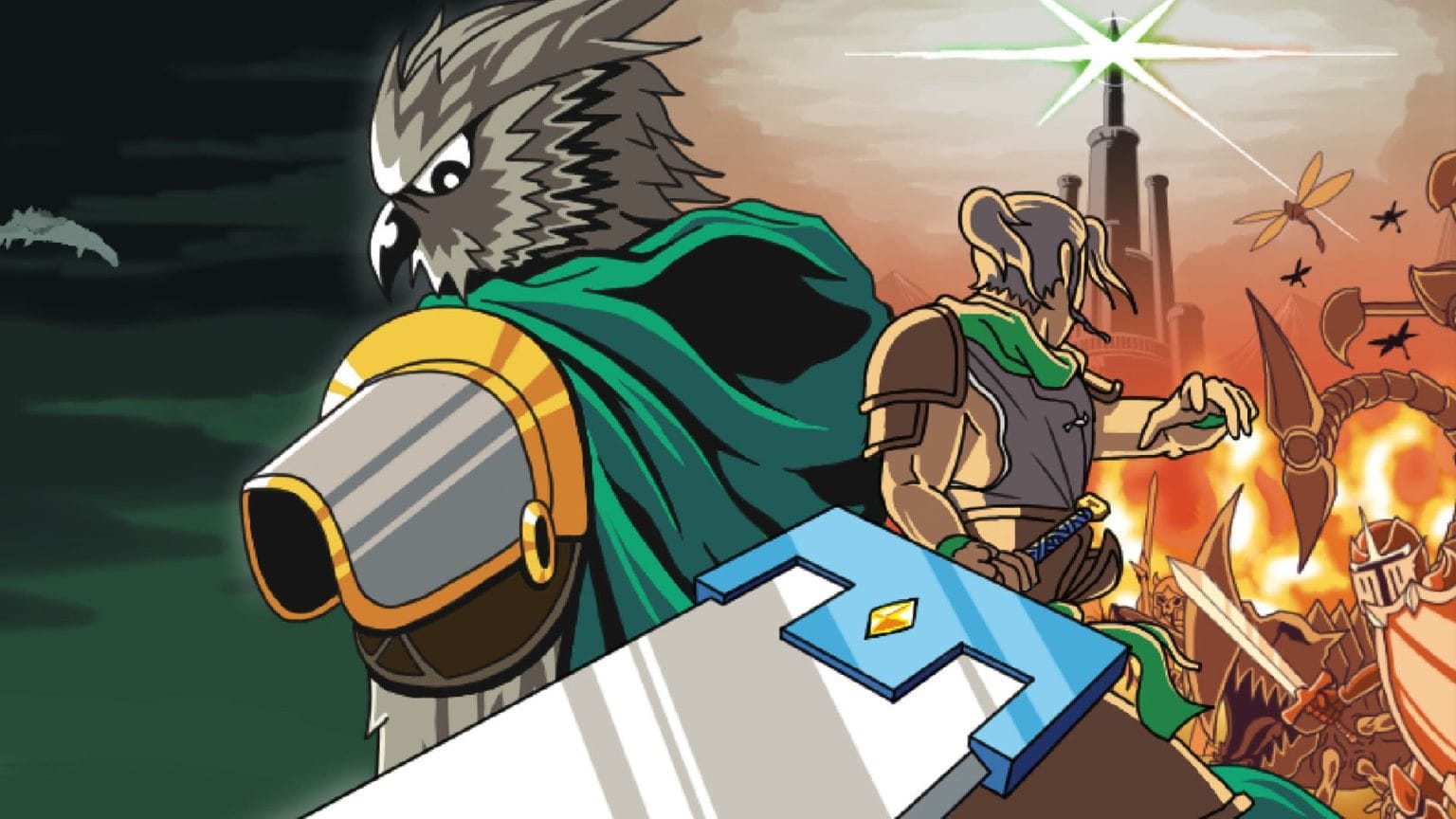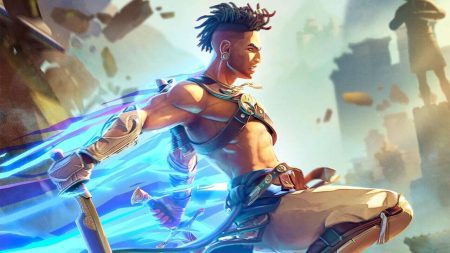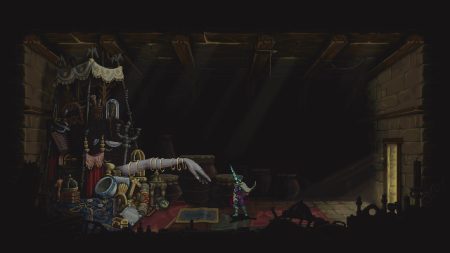Coming out of PAX East this year, my most anticipated game of 2025 was clear. I had the opportunity to see and try dozens of games at the convention, but GigaSword stood head and shoulders above the rest.
At first glance, it’s pretty easy to explain why. The game’s billed as a puzzle-platformer meets metroidvania where you wield a massive “GigaSword” to slice through baddies on a quest to save the world from evil. The positive previews practically wrote themselves. But, as anyone who has demoed games before release probably knows, promises aren’t always kept the way we’d like them to be.
Beyond the badass tagline and action-packed genre blending, one thing hooked me as soon as I sat down to give GigaSword a try: care. I might even go so far as to say “love.” Getting to meet small studios and passionate developers at PAX was a true treat. There were countless exhibitors I talked to who clearly put their heart and soul into their games, but no one stood out to me quite like GigaSword’s solo developer, Jack Breen.
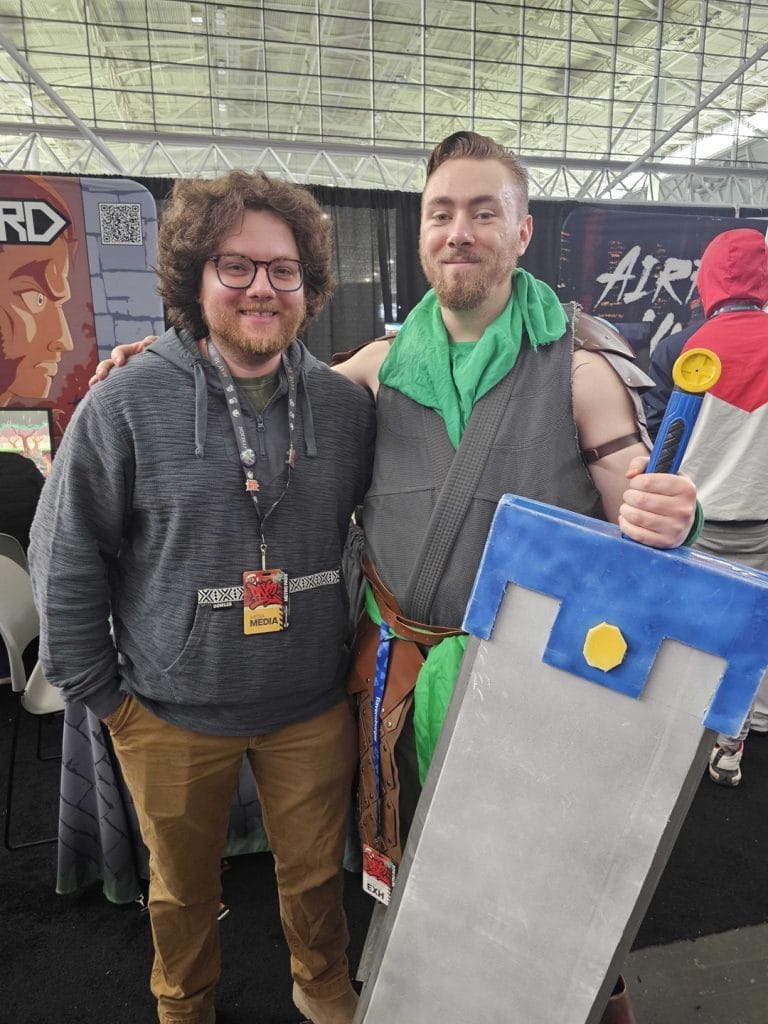
Known as Studio Hybrid, Jack was front and center at the GigaSword booth, dressed in full costume as the game’s main character, Ezra (6-foot-tall GigaSword included). He graciously talked to anyone who had questions and explained that he’d been tirelessly working on the project for five years, which made the impending release that much sweeter. So close to the finish line, it was clear Jack was feeling a mix of relief, excitement, joy, and an immense amount of pride for the art he had created.
The beautiful thing is, you can feel all of that when playing GigaSword. As I dug into the demo Jack had prepared, I immediately developed what I can only describe as a sense of trust. My demo slot was for 15 minutes, but I knew after about six that this was going to be an experience I wouldn’t want to miss, so I ended early, not wanting to spoil my future playthrough. I had faith Jack would go to great lengths to ensure his game was a success, and there was little doubt in my mind GigaSword would live up to the lofty expectations I had placed upon it.

Was that a silly, probably ridiculous proposition to put on a grown man with a sword the size of a surfboard that I had just met? Yeah, maybe I got a little too excited that Jack let me hold the GigaSword… but I’m ecstatic to say I’ve played through GigaSword and it absolutely rips.

Someone Called You an Owl
Our journey begins with a cutscene and a short yet hard-hitting tutorial section. You play as Ezra, a down-on-his-luck orphan who spends his days scrounging for resources in a small village. In this world, large owl-like beings called Nocturne keep the peace in a nearby tower where they guard an all-powerful crystal known as Gnosis.
Somewhat predictably, the humans in the town don’t like that these mysterious creatures seem to be keeping this treasure to themselves as people starve in the streets. So, an invasion of the tower is planned in secret, to be carefully coordinated in a powerful ambush. During the attack, Ezra’s closest friend and unofficial guardian, a Nocturne named Omari, is killed, and the tower becomes engulfed by a storm that creates a rift between dimensions. Armed with Omari’s GigaSword, it is up to our chosen one, Ezra, to fight through the hordes of demons crawling within the Nestrium and save the day.
The exposition here is actually quite engaging and the first example, right off the bat, of the care behind GigaSword. Whereas so often, having an actual reason to go on your journey feels like an afterthought (cough every Nintendo game cough), I never found the writing corny or contrived, and I was deeply invested in our main characters from the jump.

It’s Dangerous To Go Alone
Anyone familiar with the metroidvania genre will instantly be right at home with GigaSword, but a clever hook mixes things up just enough to stay both fresh and familiar. Because the Nocturne are massive creatures, the weapons they use are rightfully just as large. When wielding the GigaSword, Ezra is slow and heavy, limiting his movement. At any point, he can plunge the sword into the ground and take off alone, increasing his mobility but leaving him vulnerable to attacks. This trade-off informs the entire experience, asking the player to constantly make decisions on how to navigate the surroundings, plan the next route, and battle (or evade) waves of enemies along the way.
The Nestrium is a maze of twists, turns, and secrets. As with any good metroidvania game, breadcrumbs litter the map, hinting at unique abilities, items, and power-ups waiting to be discovered. GigaSword makes great use of its core theme by integrating Ezra’s huge blade into every puzzle possible. There are switches, doors, platforms, and special devices only accessible when your sword is inserted into them. However, given your diminished traversal abilities when armed, figuring out exactly how to maneuver Ezra can often be trickier than it appears.
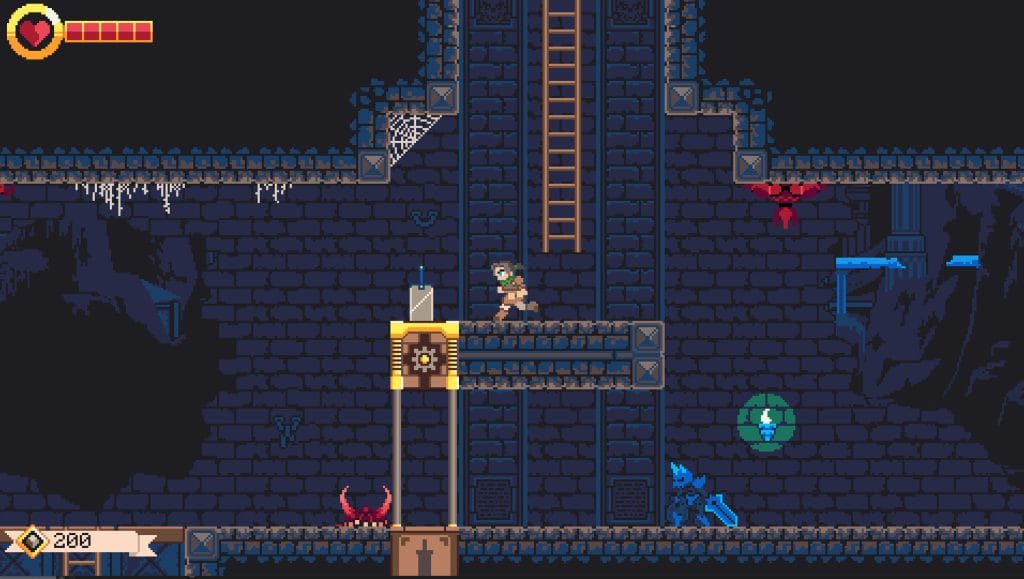
At first glance, the difference in your jump distance with and without your sword may not seem like a big deal, but the environments are so meticulously crafted that every gap or hazard plays into this duality. Metroidvanias are known for their sprawling maps that reward backtracking and attention to detail, so adding a layer of navigational complexity is no small feat. The fact that nearly every room has to be accessible in one direction with one set of abilities, but intentionally inaccessible with only a small adjustment to your character, is impressive and at times mind-boggling. That’s not to mention the levels that throw disappearing blocks, destructible ice, or pitch-black tunnels at you, further scratching different parts of your brain.
I came away in awe of any development team, big or small, that can design an interconnected, fully functioning, puzzle-filled experience without allowing game-breaking shortcuts (more on that later) or the ability to skip large sections entirely. The fact that GigaSword was created by one person makes the achievement even more outstanding. Add in a light but atmospheric soundtrack and a classic pixel art style with a surprising amount of detail, and it seems there’s nothing Jack Breen can’t do!

My Spoon Is Too Big
Of course, using your big ol’ sword for pushing blocks and weighing down buttons is all well and good, but what about, you know, smashing stuff?! Fear not, as there is no shortage of combat to be found in GigaSword, and it feels so good. For a puny human, Ezra has some muscle; though his attacks are slow, he makes up for a lack of speed with plenty of power.
You’ll mostly be slicing and dicing enemies with a three-hit combo that packs a punch, but there’s also a jump attack and several unlockable upgrades that boost Ezra’s arsenal. Certain bad guys require a special approach to defeat, and the variety throughout was a highlight, as even in the final levels, I came across new foes with tricks up their sleeves. Bosses, too, were a bright spot. No two felt the same, and unlike some games where a new item is the obvious key to victory, each one felt right for the moment without seeming cheap or overly simple.
Some enemies were more challenging than others, and I wouldn’t have minded a slightly larger skill tree, as I did max out the GigaSword’s potential about halfway through my 25-hour playthrough, but what is available feels appropriate and well-balanced. Certain abilities, like a long-range fireball or overhead lightning strike, require mana, which is acquired by killing foes, as are hearts that show up seemingly right when you need them, but never too often. That’s one of the many little details here that make GigaSword feel custom-made by a gamer for other gamers.
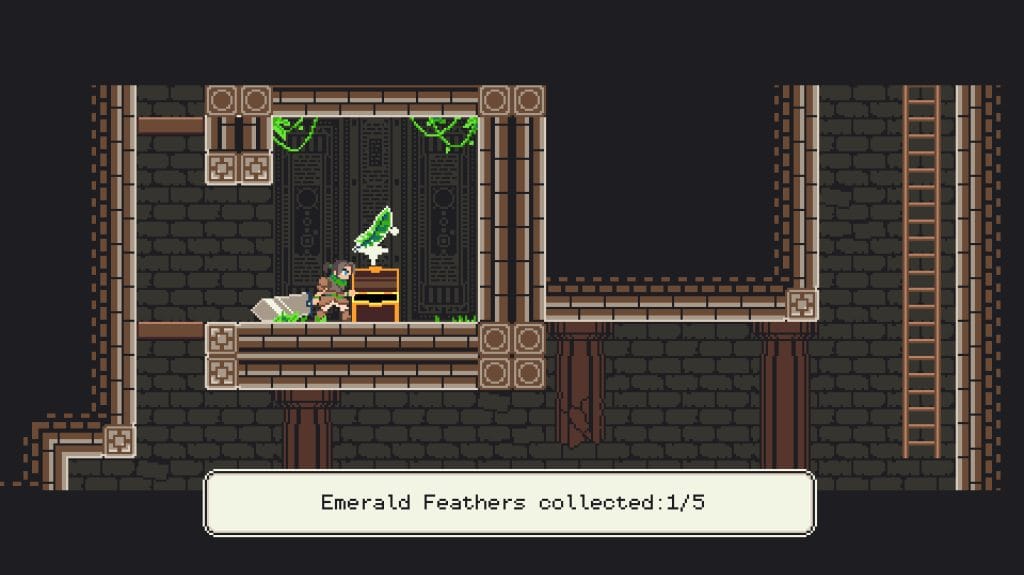
Upgrades are handled either by collecting coins called “ore” from enemies or by finding hidden feathers in each of the biomes of the tower. The currency is straightforward — no endless trinkets or economies to figure out. You’ll level up at shrines (i.e., save points) that are generously scattered throughout the tower.
GigaSword feels truly made with love and respect for its audience, with few, if any, design decisions made to purposely force the player to operate a certain way or block their progress. Even small choices, like the fact that enemies only damage you when they attack (as opposed to when they touch you), or that getting hit by an enemy doesn’t knock you off a ladder you’re climbing, made me appreciate the kindness on display. Oh yeah, and there’s a secret bunny that you pet and feed carrots to in exchange for heart upgrades. Does it get better than that?
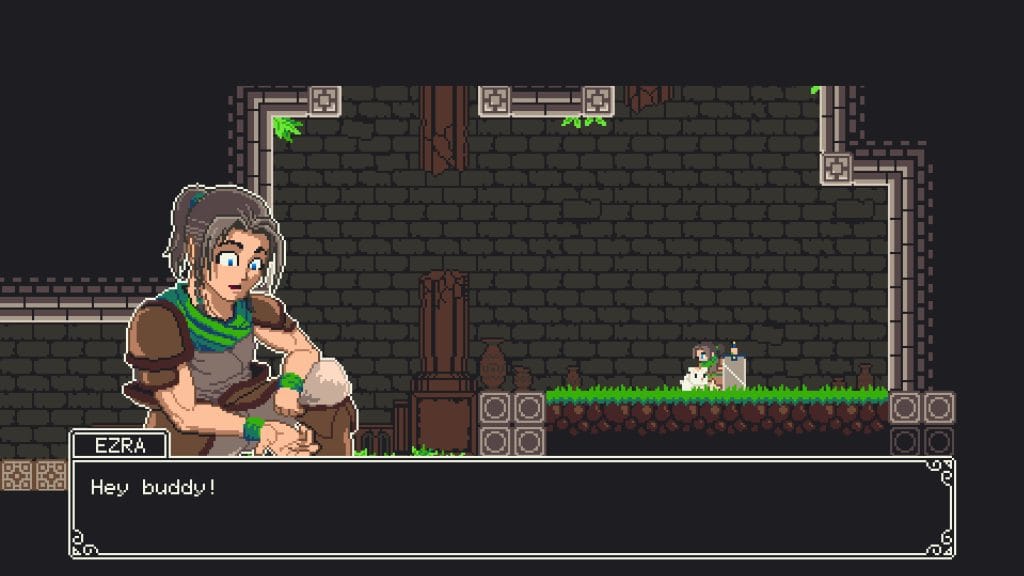
Flip the Bird
Of course, even with bunnies, no game is perfect, and GigaSword is no exception. I loved nearly every minute of my playthrough and may be grading it generously, given what I know about the game’s development. In reality, though, from a game design standpoint, there are only two things I would have liked to see, and they go hand in hand.
Given the overall quality of GigaSword, I was quite surprised at how barebones the map was. This game is not small, and as you move through the Nestrium, it is easy to get lost. That’s part of the charm of a metroidvania, but with no pins, markers, or notes to help you along the way, backtracking can get tedious. There’s almost no information given about the layout or contents of each room you find, only their general position and what kind of entrance or exit they have (sword door, key door, etc.). A little extra detail could have gone a long way in making the game feel even tighter and more streamlined than it already does, and probably would have resulted in a shorter playthrough without some of the minor frustrations I experienced.
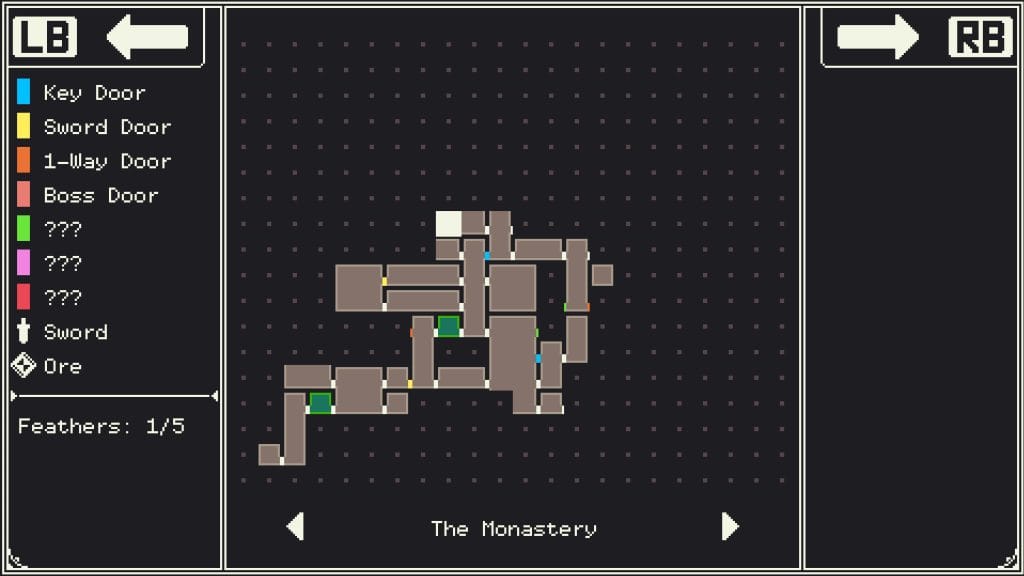
Along the same lines, there’s no fast-travel system whatsoever. As you gain abilities and make your way through previously explored locations, you can move more quickly and find some newly accessible paths, but these are no replacement for a proper fast-travel mechanic. This in particular felt inexcusable, and I find it hard to understand how it was not included. Everything, and I mean everything else, was so well done, so these missteps stood out like sore thumbs.
I also feel obligated to discuss the bugs I encountered during my review period. Glitches ranged from minor inconveniences like black bars remaining on-screen after a cutscene to fully game-breaking problems where the map wouldn’t properly track your location or Ezra became stuck on a ledge after taking damage from an enemy. I believe I even found a few spots on the map that allowed for a workaround that didn’t appear fully intended. That concerned me in terms of the playability of later areas, but the issue thankfully never cropped back up in a meaningful way or prevented my progress. (A patch was released shortly after the game’s launch date, so your experience may — and hopefully will — differ from mine.)
In terms of truly unforgivable issues, only two occurred. For a few days, I was unable to proceed past a certain room without the game completely crashing. This appeared to be an issue only on Nintendo Switch hardware and has since been corrected. Otherwise, one inexplicable problem persists where I am unable to access special areas referred to as the “Astral Realm.” These secret rooms appear in multiple locations off the beaten path, but instantly freeze my file whenever I try to enter. While these rooms are ultimately optional, this lack of accessibility is puzzling and not in a good way.

Final Thoughts
I adored my time with GigaSword and ultimately didn’t want it to end. It is the special type of game you stay up late devouring, go to bed thinking about, and wake up wanting to play more. The classic metroidvania loop of exploring, finding abilities, and breaking new ground is beautifully complemented by a deceptively simple puzzle mechanic that had my synapses firing left and right. And bashing enemies to bits with your massive sword is pretty awesome too.
The fact that a game this deep and inventive was made by one person is a triumph, and the achievement in design, sound, writing, and plain old fun overshadows the bugs that popped up during my playthrough. GigaSword is the perfect gift this holiday season; I just hope Santa can fit that 6-foot sword down the chimney!
Score: 9.0/10
GigaSword, developed by Studio Hybrid and published by Akupara Games, released on November 13, 2025, for PC (via Steam), PlayStation 4 & 5, Xbox Series X/S, Xbox One, and Nintendo Switch. MSRP: $14.99. Platform reviewed: Switch.
Disclaimer: A review code was provided by the publisher.
A Second Opinion on GigaSword
Written by David Silbert:
Zack already did a terrific job explaining the many great qualities of GigaSword. While the technical issues he encountered were regrettable, publisher Akupara was quick to troubleshoot and graciously provided us with a PC code while we waited for a fix on Switch.
I’ve been testing out the PC build via Steam Deck and have had zero issues. The game plays like butter, with impressive visuals and arguably even better music. Like Zack, I’ve been particularly impressed by the game’s storytelling. Where most metroidvanias thrust players right into the action and/or rely on environmental storytelling to carry the plot, GigaSword isn’t afraid to take its time. The opening cutscene alone is about five minutes long, with intricate pixel-art stills and meaty lines of exposition that set up Ezra’s plight. The tutorial, too, serves to further the story and feels ripped (in a good way) straight from an Uncharted game. This is not your average save-the-world plot.
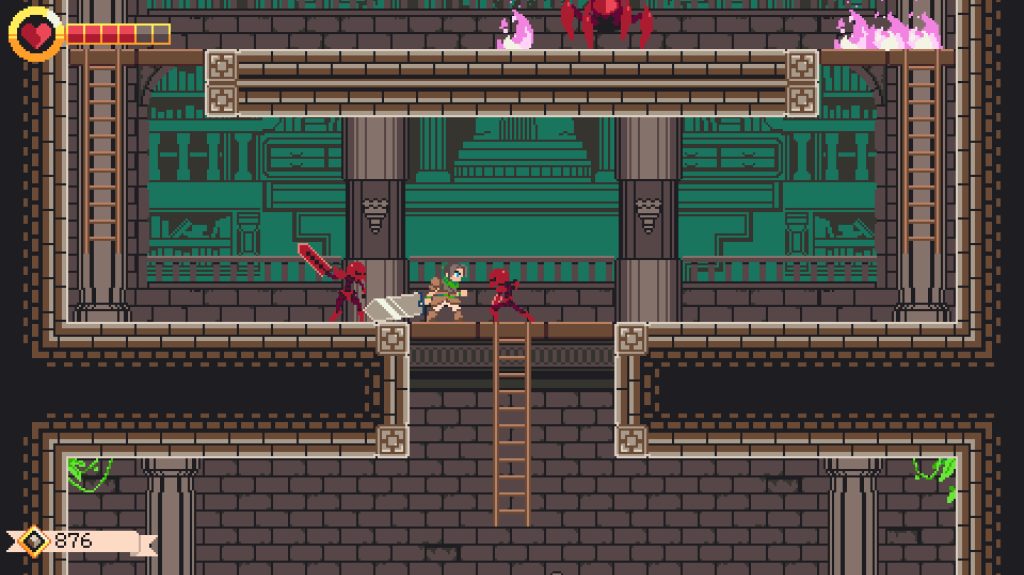
That Tunic Looks Familiar…
Gameplay-wise, GigaSword feels like the perfect blend of Metroid and The Legend of Zelda. The metroidvania DNA is obvious (sprawling map, game-changing powerups, secrets in plain sight, etc.), but there’s a methodical nature to the game that calls to mind childhood nights spent powering through the Water Temple in Ocarina of Time. Plus, it’s hard to ignore the classic green-and-brown tunic and blue sword hilt.
Combat has been my least favorite element of the game so far. Granted, I’ve yet to see and do all that Zack has, but there’s a repetitive flow to enemy encounters (dodge, three-hit-combo, repeat) that I’ve found a bit lackluster. Thankfully, the puzzles, story, and general vibes all more than make up for it.
Like Zack, I also want to reiterate that this is all the product of one developer. The art (stunning), music (catchy and heartfelt), and writing (sharp as a razor) are all top-notch, befitting the game’s equally strong design. Jack Breen hails from Massachusetts, so perhaps it should come as no surprise that the New England excellence shines through here, too.
I haven’t played enough to share a score of my own just yet, but several hours in, I’m loving what I’ve seen so far from this one-man epic.

